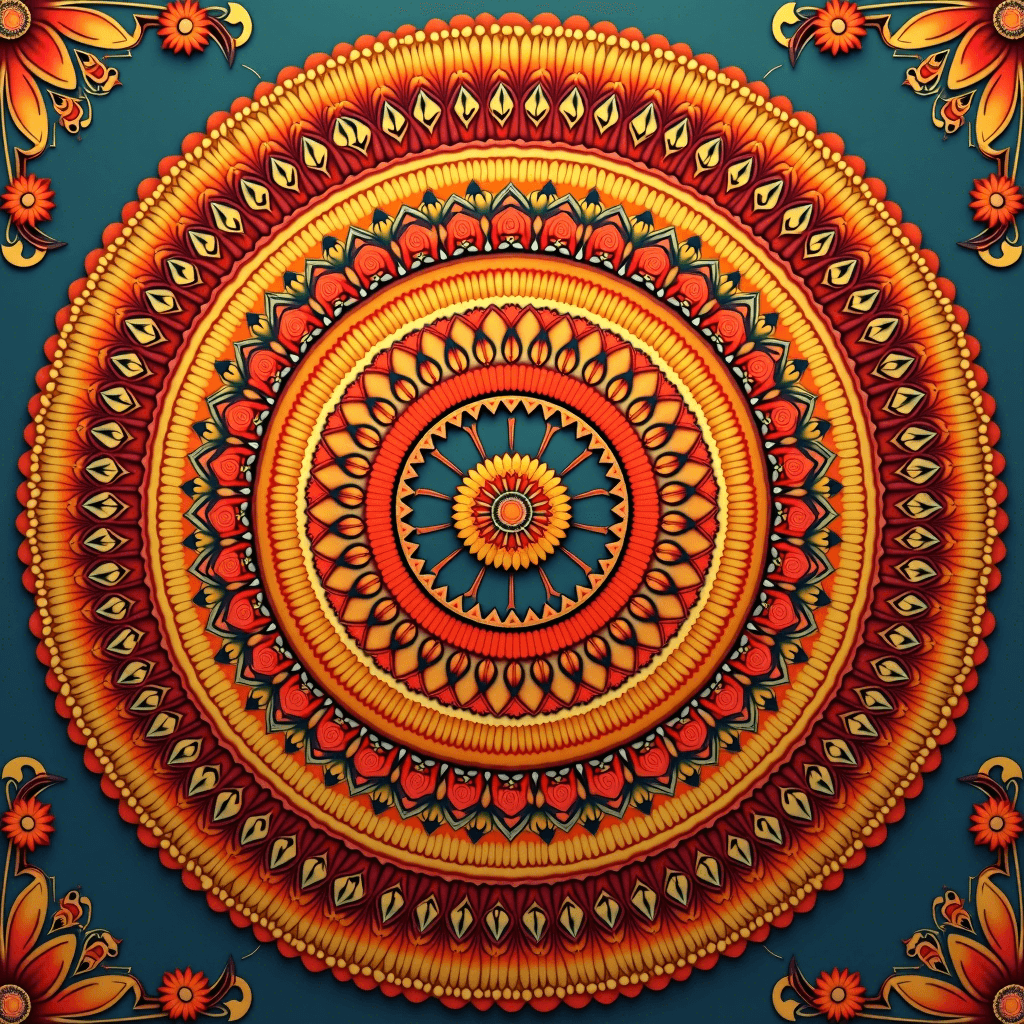
Indian Mandala
Indian Mandala art, characterized by symmetrical geometric patterns and vibrant colors, symbolizing spirituality and meditation.
Quick Navigation
External Resources
Overview
Origin
India
Historical Period
6th century BCE onwards
Cultural Significance
Mandalas in Hinduism and Buddhism symbolize cosmic harmony and are used in meditation and religious rituals to represent the universe.

Historical Timeline
1st century BCE
Early mandalas appear in Buddhist texts
8th century CE
Development of complex tantric mandalas
Techniques
Symmetrical geometric designs
Use of vibrant colors like orange, red, and gold
Intricate hand-drawn patterns
Incorporation of spiritual symbols like lotus flowers
Cultural Context
Mandalas in Hinduism and Buddhism symbolize cosmic harmony and are used in meditation and religious rituals to represent the universe.
Did You Know?
In Buddhist tradition, monks create mandalas with colored sand and then destroy them after the ritual to symbolize the impermanence of life.